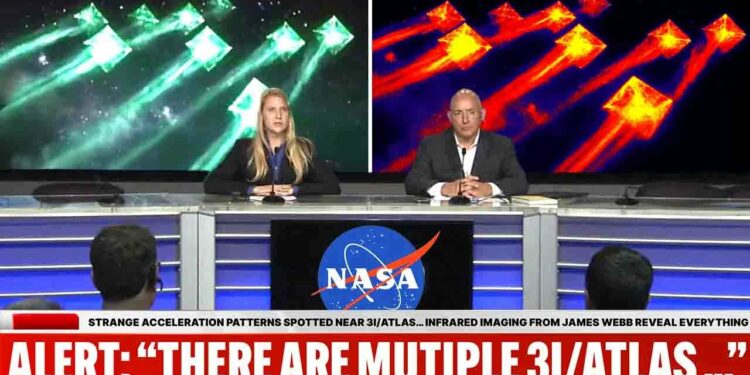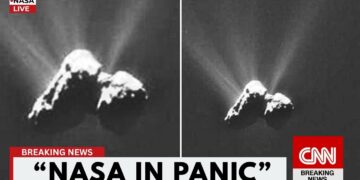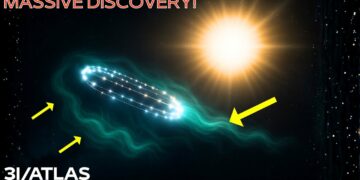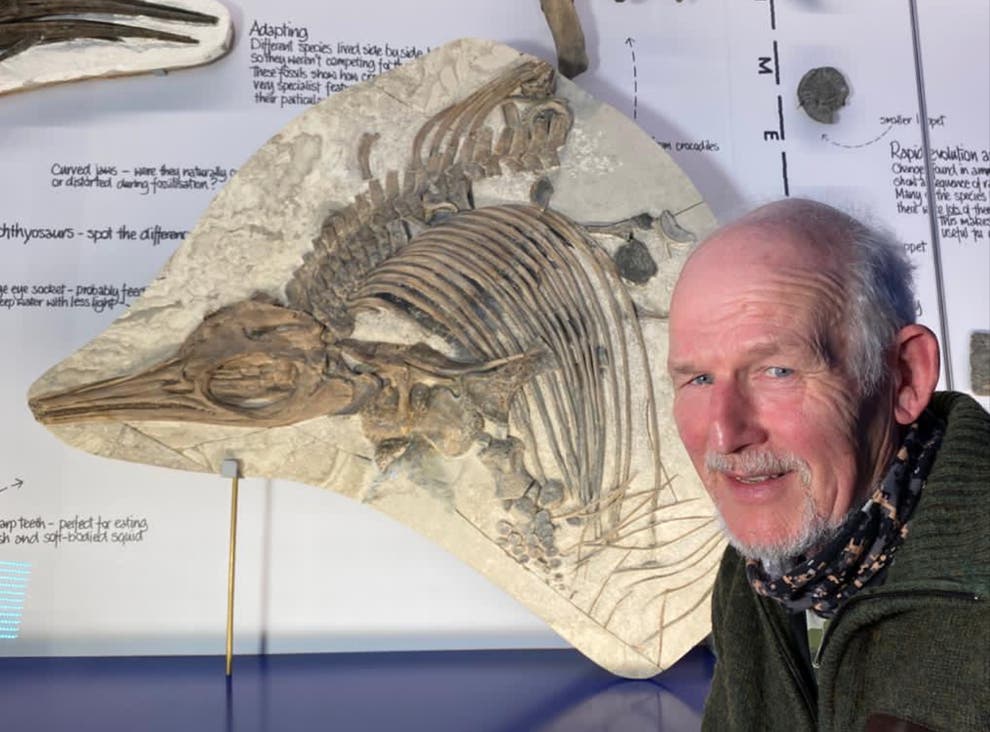NASA has detected a mysterious object, dubbed Three Atlas, hurtling toward Earth at an astonishing 130,000 miles per hour. Unlike typical space rocks, this interstellar visitor defies all expectations, prompting some experts to question whether it’s a natural phenomenon at all. Observatories worldwide were alerted to focus on the ecliptic plane, where Three Atlas was spotted, exhibiting behavior that challenges our understanding of physics. The James Webb Space Telescope (JWST), humanity’s most advanced observational tool, was tasked with unraveling its secrets. The infrared images it returned reveal not rock or ice, but a plume of superheated gas, a bizarre chemical composition, and an acceleration pattern that appears eerily engineered—an impossible image that suggests something extraordinary is unfolding in the cold, dark vacuum of space.
Discovered on July 1, 2025, Three Atlas immediately raised alarms. Its speed and trajectory, perfectly aligned with our solar system’s planets, were remarkable, but its acceleration was the true anomaly. Unlike comets, which gain a push from the sun as ice sublimates into gas, Three Atlas’s plume points toward the sun, defying the rules of cometary physics. This is akin to a boat’s wake appearing ahead of it. The JWST’s infrared capabilities, which peer through dust and gas to reveal material composition, provided a stunning revelation: the plume consists of eight parts carbon dioxide to one part water—a ratio opposite to the watery, icy comets of our solar system. Even more shocking, the plume contains atomic nickel without its usual cosmic companion, iron. In nature, these metals are typically found together, forged in dying stars. Pure nickel vapor in a cold object far from the sun suggests an artificial process, possibly industrial in nature.
Three Atlas is only the third confirmed interstellar object to enter our solar system, following ‘Oumuamua and Borisov. However, its behavior outstrips even ‘Oumuamua’s mysteries. Its trajectory, tilted just five degrees from Earth’s orbital plane, is statistically improbable—a cosmic bullseye in the vast emptiness of space. Its path resembles a meticulously planned tour, aligning closely with Jupiter, Mars, and Venus, as if leveraging their gravity for a fuel-efficient journey. At an estimated 28 miles in diameter, Three Atlas is a million times more massive than Borisov, a scale unprecedented for interstellar visitors. Its size, trajectory, and acceleration suggest it’s not a random piece of debris but an object with purpose.
The acceleration, measured at a gentle but constant 4×10⁻⁷ m/s², is directed sunward—a non-gravitational force that defies natural explanations. Cometary outgassing typically pushes objects away from the sun, yet Three Atlas’s jet originates from its cold, sun-opposing side. The JWST detected carbon monoxide alongside the carbon dioxide, mirroring processes like the Mond process used on Earth to purify nickel. This has led to a radical theory: the plume resembles the exhaust of an ion thruster, a technology used in human spacecraft to produce low, steady thrust via ionized particles. Could Three Atlas be slowing itself to enter a stable orbit around the sun, suggesting an interstellar vehicle?
This object’s anomalies force a chilling question: is it a natural oddity or something artificial? Its chemical signature, massive size, and precise trajectory challenge the comet hypothesis, requiring a cascade of improbable coincidences. The artificial explanation—that it’s a probe or vehicle—requires only one leap: that we are not alone. Several theories have emerged to explain its purpose:
-
The Ark Hypothesis: Three Atlas could be a generation ship, a hollowed-out world carrying a civilization in hibernation, fleeing a dying star. Its thrust might be a deceleration maneuver to settle into our solar system, seeking a new home.
-
The Terraforming Theory: The carbon dioxide-heavy plume suggests planetary engineering. Its path past Mars and Venus could indicate an intent to seed atmospheres on barren worlds, with nickel as a catalyst. Humanity might merely be bystanders in a cosmic renovation.
-
The Bracewell Probe: An advanced civilization might send a dormant, hyperintelligent robot to wait millions of years for a species to emit detectable signals, like Earth’s radio waves. Three Atlas’s acceleration could signal its awakening, moving to initiate contact.
-
The Resource Extractor: Less benignly, it could be an automated mining vessel targeting our solar system’s rich asteroid belt. Its trajectory might optimize resource collection, indifferent to Earth’s inhabitants.
While a natural explanation—a unique comet producing pure nickel and carbon dioxide—is possible, it strains credulity. The universe is vast, and undiscovered phenomena may exist, but Three Atlas’s data, captured by humanity’s most advanced telescope, pushes the boundaries of what we believe is possible. Is it a natural wonder breaking all known rules, or something far more profound? As its journey continues, the world watches, grappling with the possibility that this object may not just be passing through—but heading somewhere with intent.























